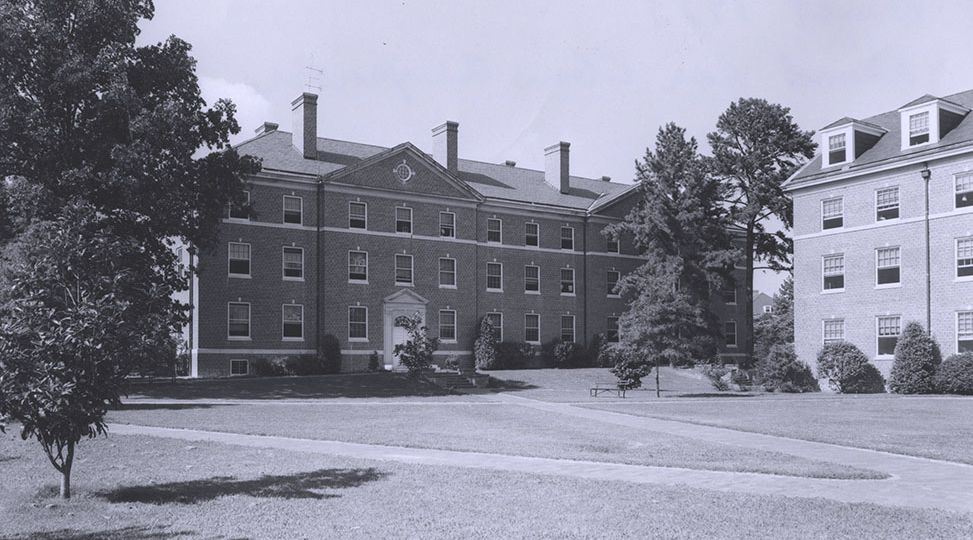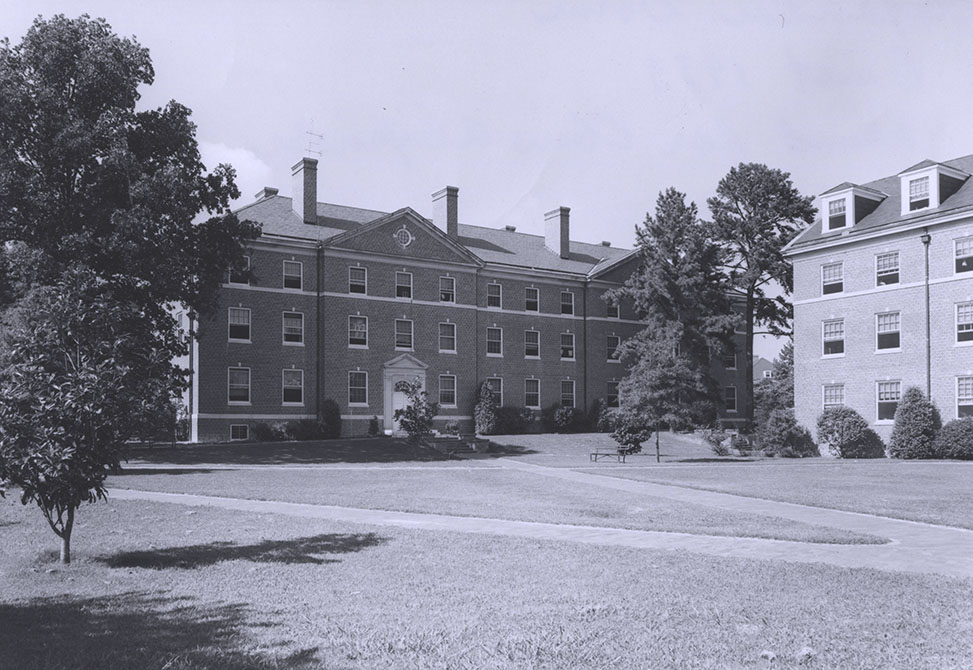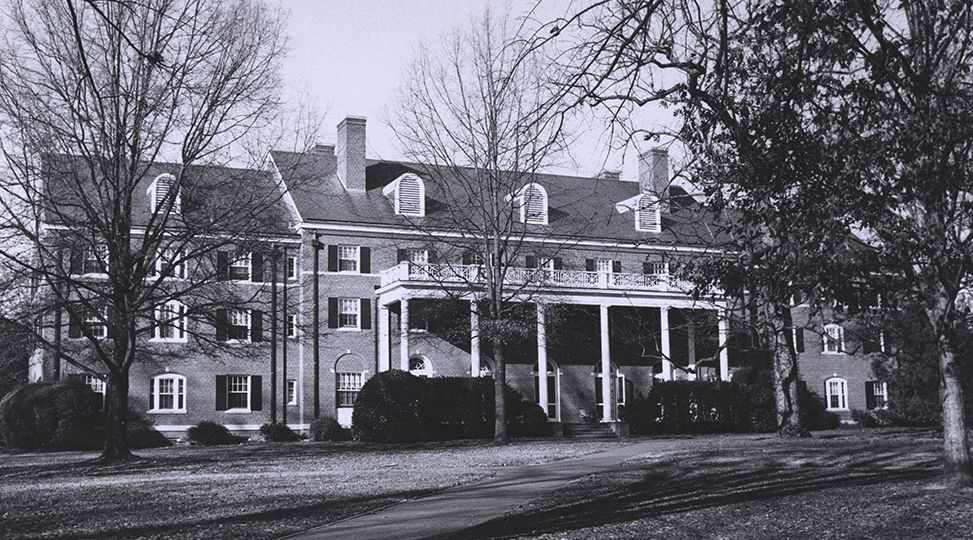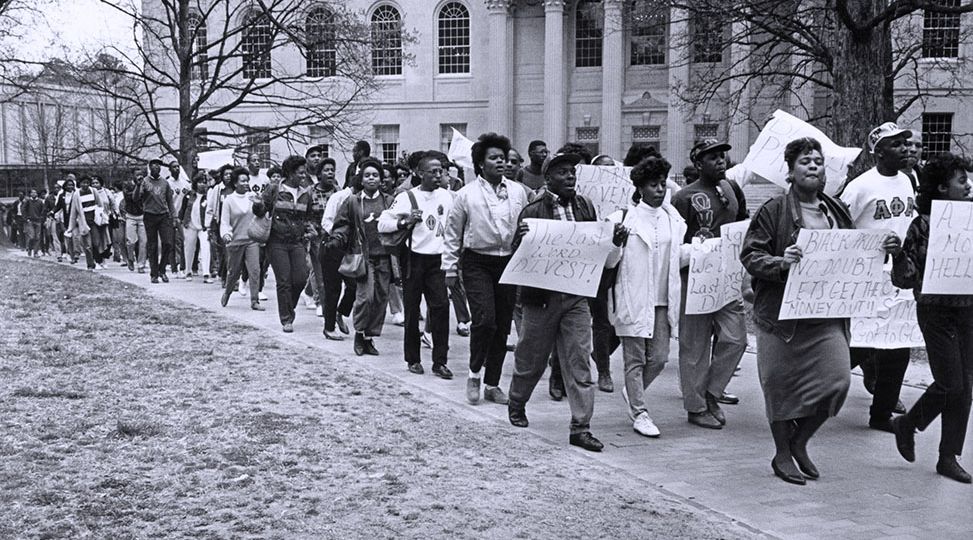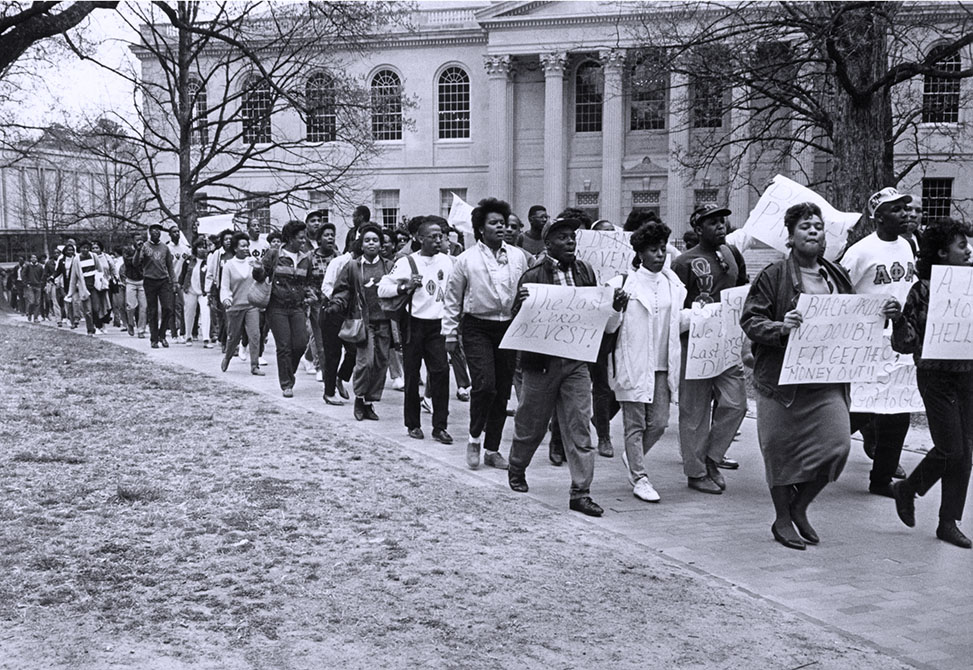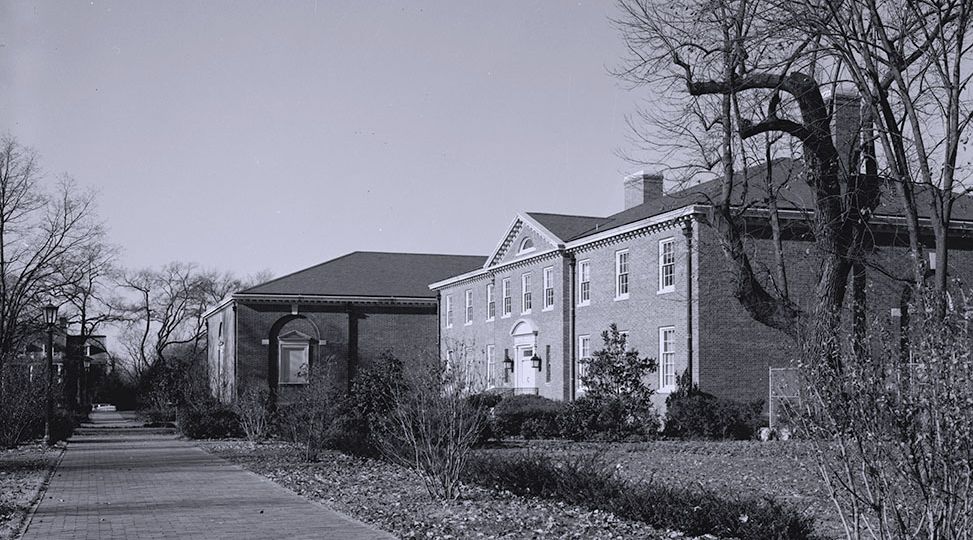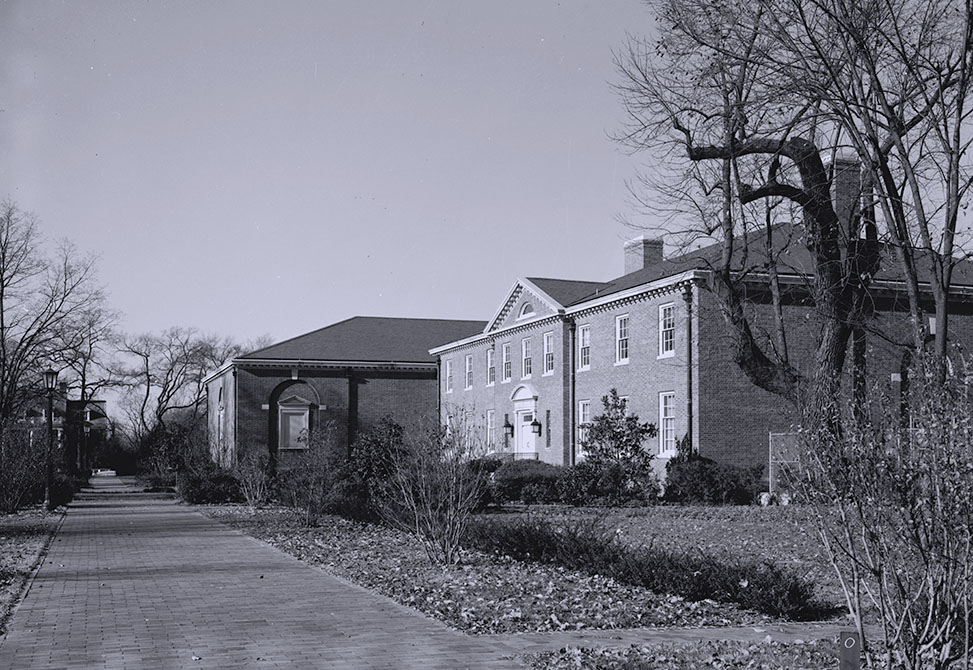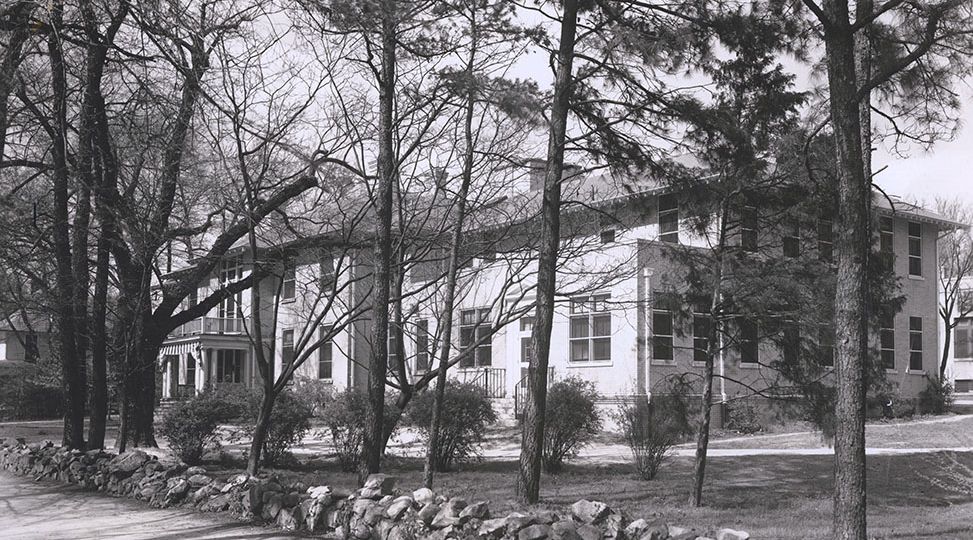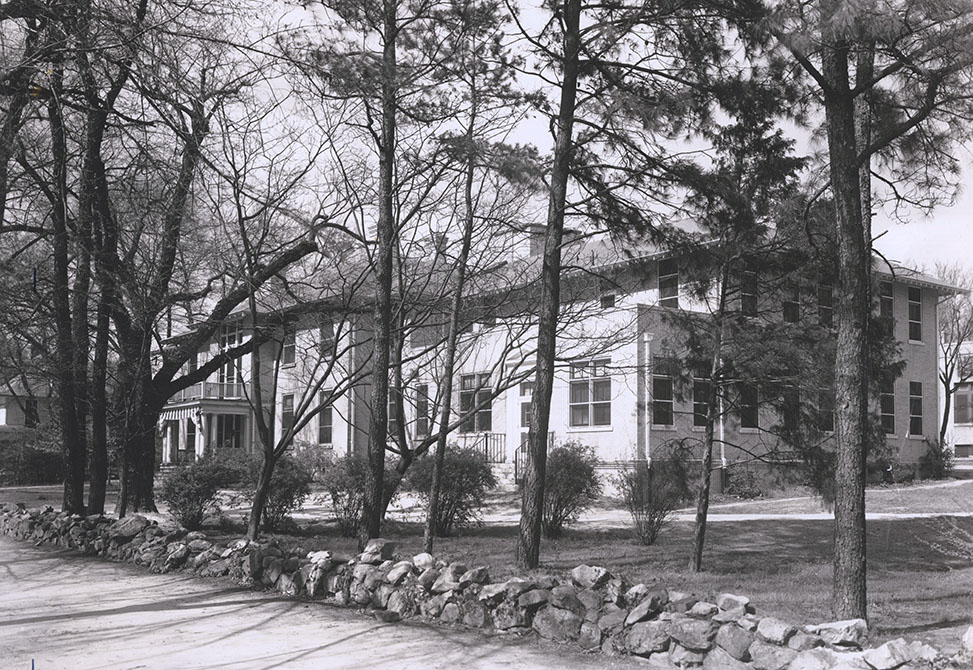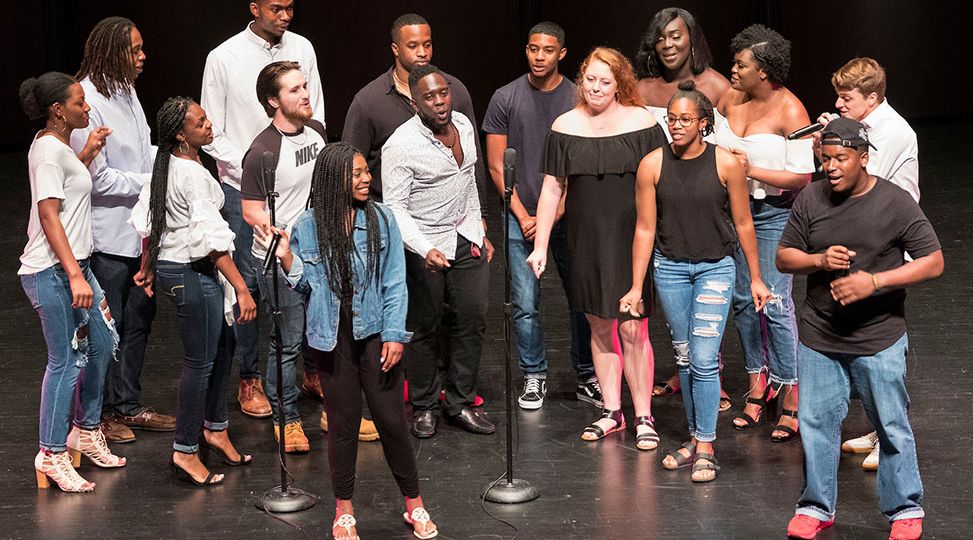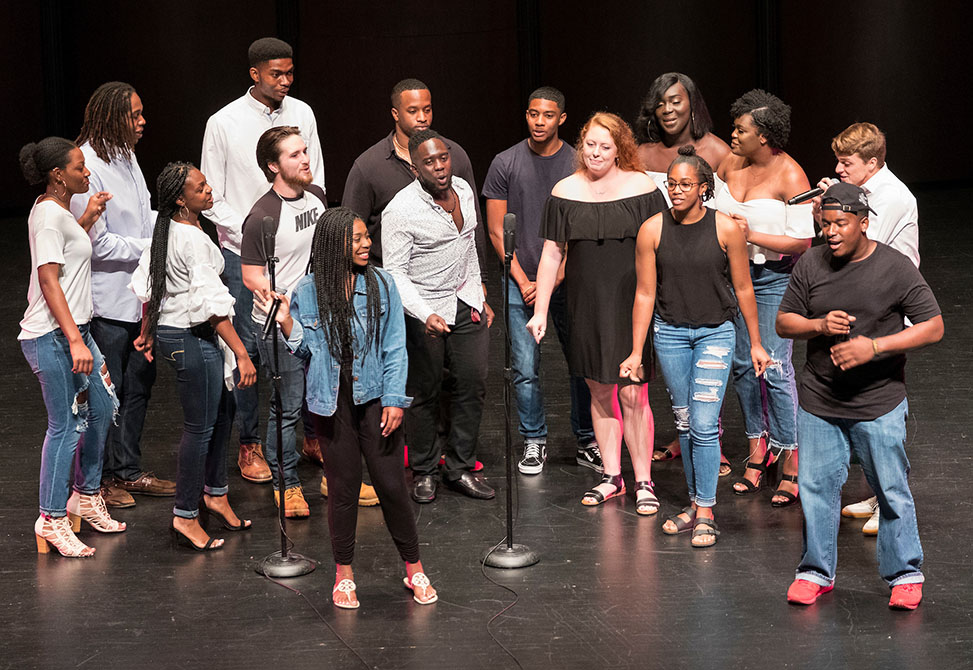Alma Mater ("Hark the Sound")
UNC—Chapel Hill's school song was performed for the first time by the campus Glee Club at the graduation ceremony on June 2, 1897. The lyrics, written by student Walter Starr Myers, were a little different from those we know today. The song began, "Hark the sound of loyal voices / ringing sweet and true, / Telling Carolina's glories / Singing NCU." After that initial concert, the song was apparently not performed for several years. When it was revived in the early 1900s, it had the familiar first line, "Hark the sound of Tar Heel voices / Ringing clear and true." When it was sung at the 1904 University Day celebration, the Tar Heel reported that the song "was never sung so well before." By that point the lyrics were fixed and the song was a part of Carolina tradition. While the lyrics are unique to UNC—Chapel Hill, the melody is not. It is based on the old Italian tune "Amici," which has been adapted by many schools for their alma maters. It is believed to have been used first by Cornell students and was soon picked up by others. Both the University of Alabama and the University of Georgia use the tune from "Amici" for their school songs. The Carolina alma mater is usually followed immediately by the song "Tar Heels Born and Tar Heels Bred," which appears to have been adopted around the same time. It was first reported sung at a baseball game in 1903. The full lyrics for both songs follow.
Hark the Sound
1. Hark the sound of Tar Heel voices
Ringing clear and True
Singing Carolina's praises
Shouting N.C.U.
Chorus
Hail to the brightest Star of all
Clear its radiance shine
Carolina priceless gem,
Receive all praises thine.
2. 'Neath the oaks the sons true hearted
Homage pay to thee
Time worn walls give back their echo
Hail to U.N.C.
3. Though the storms of life assail us
Still our hearts beat true
Naught can break the friendships formed at
Dear old N.C.U.
Tar Heels Born and Tar Heels Bred
I'm a Tar Heel born,
I'm a Tar Heel bred,
And when I die
I'm a Tar Heel dead.
So it's RAH, RAH, Car'lina 'lina
RAH, RAH, Car'lina 'lina
RAH, RAH, Car'lina
RAH! RAH! RAH!
All Carolina graduates know that the proper last line of the fight song is either "Go to Hell Duke!" or "Go to Hell State!," depending on which was the more heated rivalry when they were in school.
Date Established: 1897
Date Range: 1897 – Present


